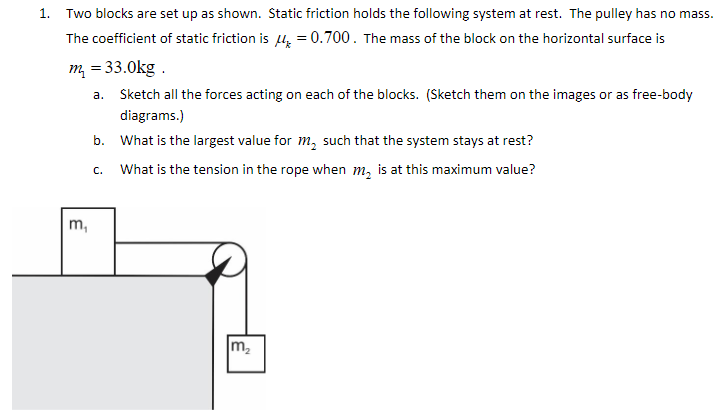Two blocks are set up as shown. Static friction holds the following system at rest. The pulley has no mass. The coefficient of static friction is μk = 0.700. The mass of the block on the horizontal surface is m1 = 33.0 kg. a. Sketch all the forces acting on each of the blocks. (Sketch them on the images or as free-body diagrams. ) b. What is the largest value for m2 such that the system stays at rest? c. What is the tension in the rope when m2 is at this maximum value?
